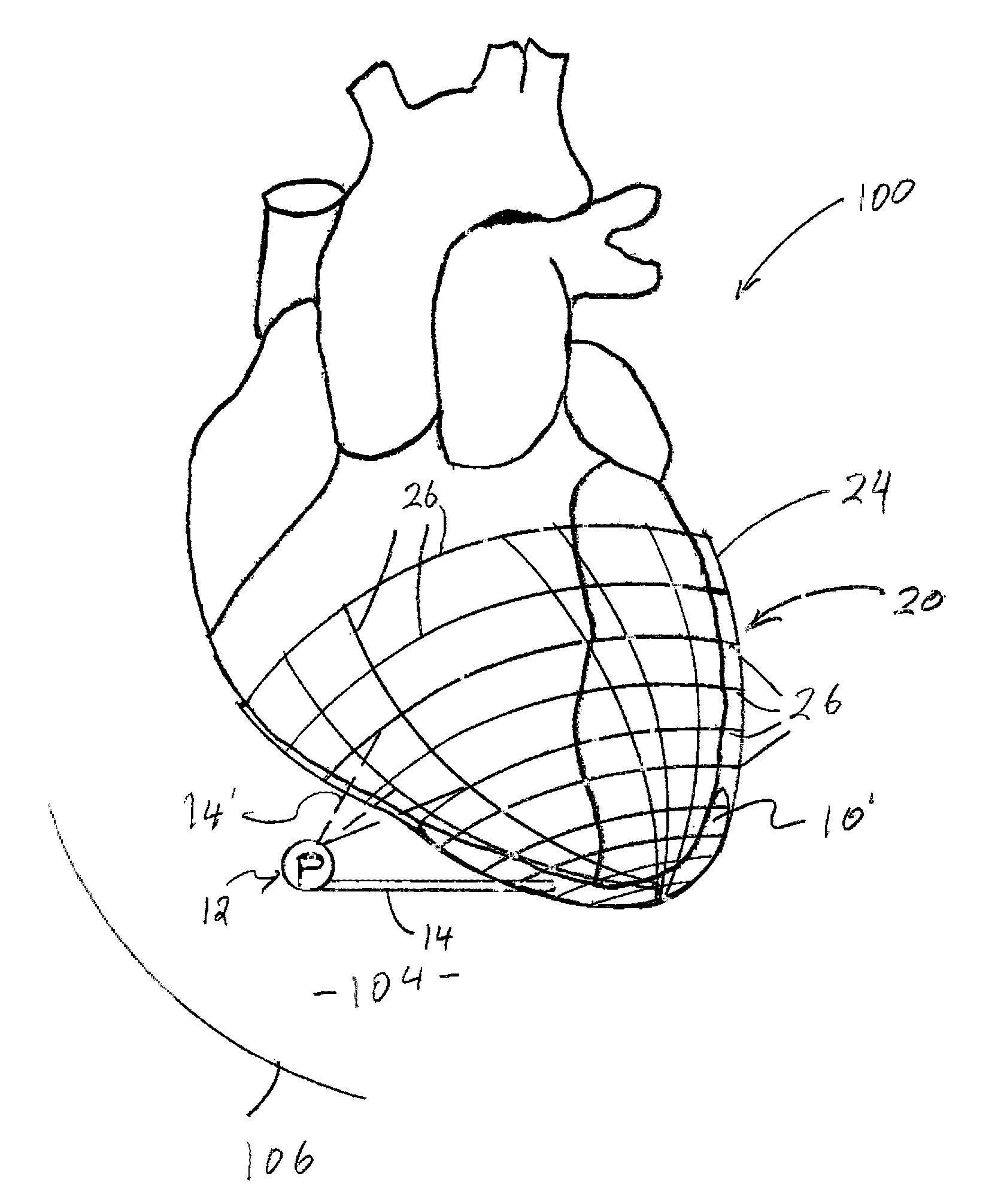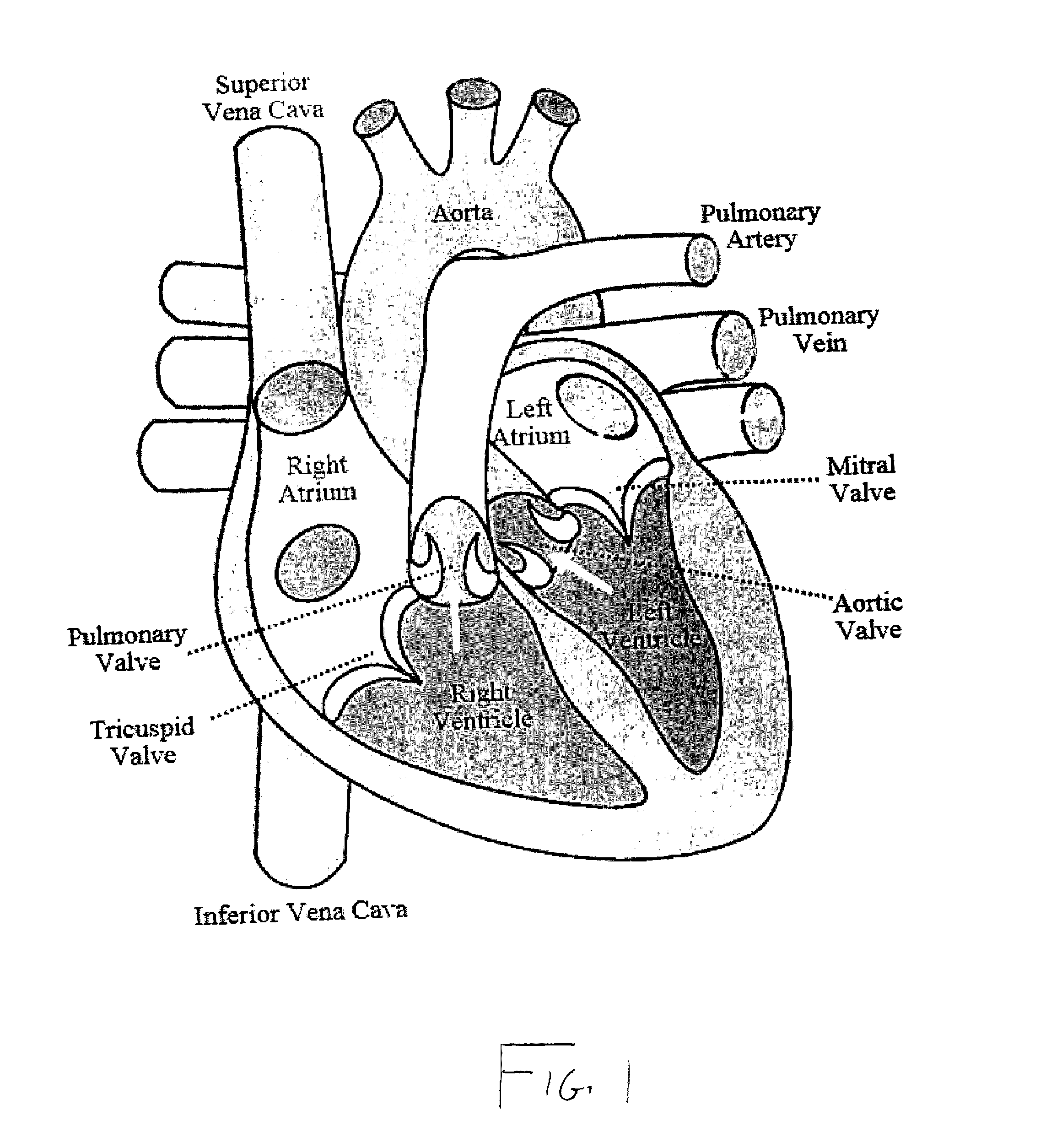System for treating heart valve malfunction including mitral regurgitation
a technology of positioning structure and mitral valve, which is applied in the direction of heart stimulators, prostheses, therapy, etc., can solve the problems of mitral valve remaining partially open during ventricular contraction, mitral valve regurgitation, and blood back into the left atrium, so as to facilitate the positioning of at least one, and eliminate or restrict mitral regurgitation
- Summary
- Abstract
- Description
- Claims
- Application Information
AI Technical Summary
Benefits of technology
Problems solved by technology
Method used
Image
Examples
Embodiment Construction
[0034]As represented in the accompanied drawings, the present invention is directed to a system for treating heart valve malfunction specifically including mitral regurgitation, wherein the various operative structural components are represented throughout FIGS. 2 through 5. For purpose of clarity a representative human heart is generally indicated as 100 and is surrounded and / or enclosed by a pericardium 102, wherein the operative and structural components of the system of the present invention are located within the interior of the chest cavity 104. In providing a clear perspective of the environment in which the system of the present invention is practiced, the outer chest wall 106, chest cavity 104, pericardium 102 and heart 100 are all represented in schematic form.
[0035]In more specific terms, the system of the present invention is directed to an intra-pericardial, surgically introduced positioning structure 10 located between the inner surface of the pericardium 102 and the o...
PUM
 Login to View More
Login to View More Abstract
Description
Claims
Application Information
 Login to View More
Login to View More - R&D
- Intellectual Property
- Life Sciences
- Materials
- Tech Scout
- Unparalleled Data Quality
- Higher Quality Content
- 60% Fewer Hallucinations
Browse by: Latest US Patents, China's latest patents, Technical Efficacy Thesaurus, Application Domain, Technology Topic, Popular Technical Reports.
© 2025 PatSnap. All rights reserved.Legal|Privacy policy|Modern Slavery Act Transparency Statement|Sitemap|About US| Contact US: help@patsnap.com



